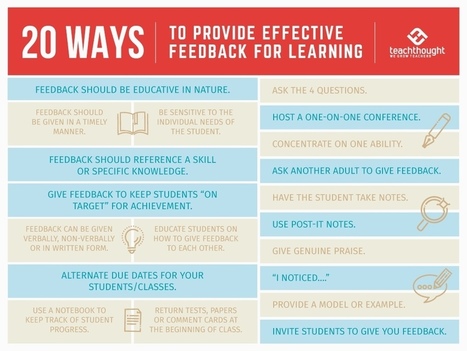A teacher has the distinct responsibility to nurture a student’s learning and to provide feedback in such a manner that the student does not leave the classroom feeling defeated. Here you will find 20 ideas and techniques on how to give effective learning feedback that will leave your students with the feeling they can conquer the world.
Research and publish the best content.
Get Started for FREE
Sign up with Facebook Sign up with X
I don't have a Facebook or a X account
Already have an account: Login
Professional learning in a glance (or two)!
Curated by
John Evans
 Your new post is loading... Your new post is loading...
 Your new post is loading... Your new post is loading...
|
|













A teacher has the distinct responsibility to nurture a student’s learning and to provide feedback in such a manner that the student does not leave the classroom feeling defeated. Here you will find 20 ideas and techniques on how to give effective learning feedback that will leave your students with the feeling they can conquer the world.